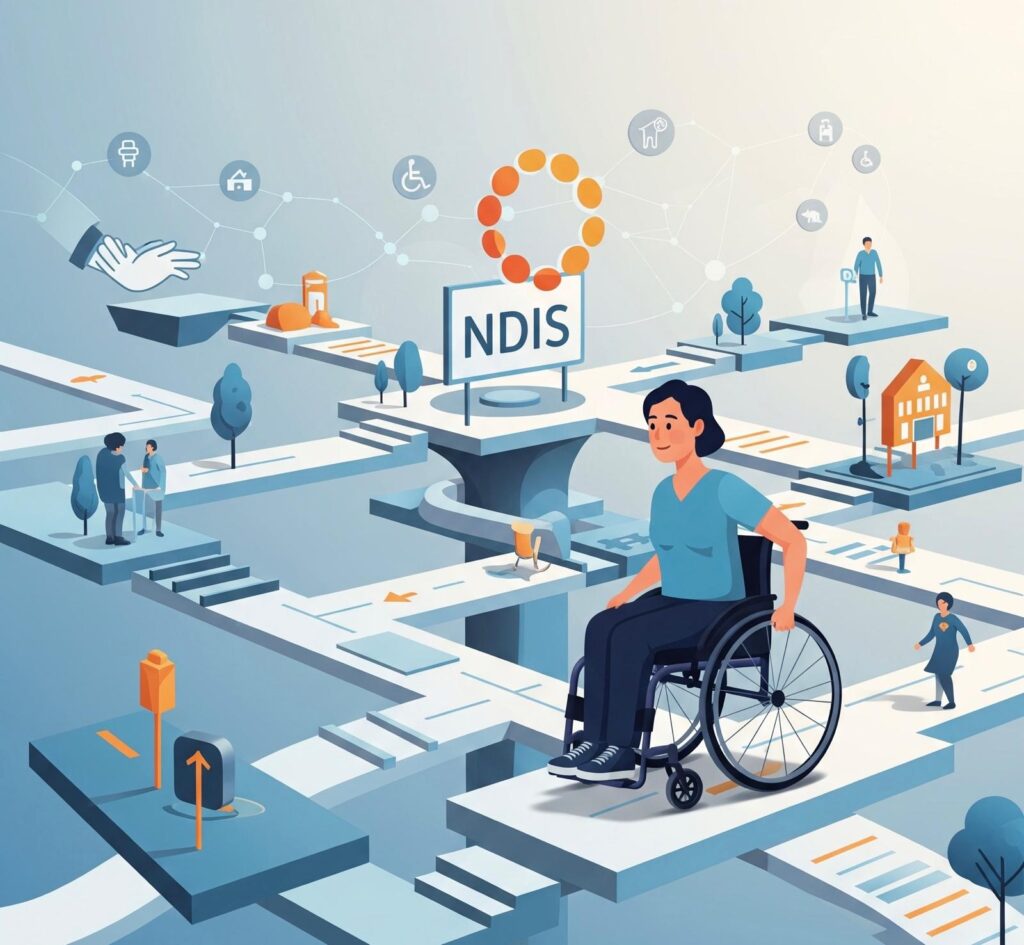Read this first
Therapy works best when it’s a team effort. The strongest predictors of good outcomes are things you and your clinician do together—a safe working relationship, clear goals, regular feedback, and practice between sessions (Flückiger et al., 2018; Callahan et al., 2018).
1) Choose fit first: the therapeutic alliance matters
A large meta-analysis across 295 studies found a reliable, moderate association between the quality of the therapeutic alliance and outcomes—across modalities and even online formats (Flückiger et al., 2018). That means feeling safe, agreed goals, and collaboration are not “nice to have”—they’re treatment-active.
Practical moves
- After session 1–2, ask: “Do we share the same goals? Does the way we work make sense to me?”
- If not, say so. Adjusting how you work can be as powerful as what model you use (Norcross & Wampold, 2019).
2) State your preferences (and ask your therapist to honour them)
A meta-analysis of 53 studies showed that accommodating client preferences (e.g., format, activities, therapist style) reduces dropout (OR≈1.8) and improves outcomes (d≈0.28) (Callahan et al., 2018). A 2025 update reports similar conclusions: preference accommodation improves satisfaction, completion, and clinical outcome (Parkin, 2019; 2025 update).
Try this
“I get more from structured sessions with clear take-aways and some between-session practice. Can we work that way?”
3) Set clear, measurable goals—and review them with measurement-based care
Therapy is more effective when progress is monitored with brief, standardised measures and fed back to the clinician (ROM/feedback). Meta-analyses show feedback improves outcomes and halves deterioration risk, and helps identify at-risk cases earlier (Lambert & Shimokawa, 2011; Shimokawa et al., 2018; de Jong et al., 2024 review).
What to do
- Agree 2–3 goals and a simple tracker (e.g., symptom, sleep, functioning).
- Ask your clinician to graph progress and adjust treatment when the curve stalls (Becker et al., 2018).
4) Show up consistently (and plan for wobble weeks)
Across 669 studies (≈84,000 clients), about 20% of adults end therapy prematurely. Dropout is lower when expectations are aligned, preferences are honoured, and early progress is visible (Swift & Greenberg, 2012).
Make it stick
- Book the next appointment before you leave.
- Use telehealth as a back-up to avoid gaps (see §8).
5) Do the between-session work (homework = results)
In CBT and behaviourally-informed therapies, homework adherence correlates with better outcomes. Evidence suggests both the amount and quality/skill of completion matter (Kazantzis et al., 2016; Psychiatric Clinics, 2018).
Make it doable
- Convert insights into a tiny experiment you can complete in ≤15 minutes.
- Track it and bring the result back—wins or misses are useful data.
6) Use strategic reflection between sessions (but don’t over-promise on journalling)
Expressive-writing research is mixed. Classic reviews report some benefits in specific contexts, but a 2018 meta-analysis did not find robust effects on depressive symptoms in healthy adults doing brief, unguided writing (Reinhold et al., 2018). Guided reflection that links directly to therapy goals is more promising (pilot data, 2024).
How to reflect well
- What did I notice?
- What did I try?
- What will I test next week?
Share a 3-bullet summary with your clinician.
7) If motivation is shaky, ask for Motivational Interviewing (MI) elements
Motivational Interviewing (MI) reliably produces small-to-moderate improvements in health behaviours and engagement across conditions; it’s a useful add-on when ambivalence is high (Lundahl et al., 2013).
8) Use telehealth intelligently—it’s effective and acceptable
Systematic reviews and meta-analyses show tele-mental health is generally as effective as in-person care for many presentations, and acceptable to most users when platforms are usable and private (Sood et al., 2021; BMC Public Health, 2024).
Telehealth tips
- Wear headphones, sit near your router, and close competing apps.
- Keep a shared document (or chat) for live agendas and take-aways.
9) Ask about combinations when appropriate (therapy + medication)
For depressive and anxiety disorders, combined psychotherapy + pharmacotherapy often outperforms either treatment alone, particularly for moderate–severe cases (Cuijpers et al., 2016). Your GP/psychiatrist can advise on safety and options.
10) Co-create the how of sessions (structure, pace, cultural needs)
The APA taskforce on psychotherapy relationships highlights that adapting therapy to client culture, preferences and values is linked to better outcomes—sometimes more than choosing a particular brand of therapy (Norcross & Wampold, 2019).
Tell your clinician if you prefer:
- Structured vs open-ended time
- Skills practice vs exploration
- Written summaries
- Culture-safe language and metaphors
11) Expect (and request) regular feedback loops
Ask every few sessions: “What’s one thing I could do differently between sessions?” and “What’s one thing we could change here?”
Feedback-informed treatment is one of the few practice changes with replicated outcome benefits (Lambert & Shimokawa, 2011; de Jong, 2024).
12) A 10-point checklist you can start today
- Clarify your goal in one sentence; rate it weekly (ROM).
- Share preferences (format, pace, activities).
- Agree an agenda at the start; ask for a 2–3 line summary at the end.
- Track homework; keep it small and specific.
- Use telehealth to avoid gaps when life gets busy.
- Plan for wobbles (what will keep you coming if motivation crashes?).
- Discuss meds with your GP/psychiatrist if symptoms are moderate–severe.
- Mind the alliance—say what helps and what doesn’t.
- Book ahead; protect your therapy hour like any medical appointment.
- Review progress every 4–6 sessions and adjust.
FAQ
Is the therapist–client match really more important than the specific therapy?
Both matter, but meta-analyses consistently show the alliance and responsiveness to client characteristics account for a substantial share of outcome variance (Flückiger et al., 2018; Norcross & Wampold, 2019).
Do I have to do homework to improve?
Not always, but in cognitive-behavioural approaches, homework adherence is reliably associated with better outcomes (Kazantzis et al., 2016; Psychiatric Clinics, 2018).
Will telehealth be as good as face-to-face?
For many conditions, yes—effectiveness and acceptability are comparable when delivered well (Sood et al., 2021; BMC, 2024).
What if I’m not improving?
Ask for ROM/feedback and a treatment review. Feedback-informed approaches improve outcomes and reduce deterioration (Lambert & Shimokawa, 2011; de Jong, 2024).
Bottom line
Therapy works best when it’s collaborative. The evidence shows that relationship fit, clear goals, preferences, regular feedback, and small between-session actions make the biggest difference—sometimes more than the therapy model itself. Protect your therapy time, ask for feedback, and keep the process adaptive.
References
Becker, A. & Vazquez-Barquero, J.L. (2018). Effect of feedback of treatment outcome in specialist mental healthcare: meta-analysis. British Journal of Psychiatry.
Callahan, J.L., et al. (2018). The impact of accommodating client preference in psychotherapy: A meta-analysis. Journal of Clinical Psychology, 74(11), 1924–1937.
Cuijpers, P., et al. (2016). Combining pharmacotherapy and psychotherapy for major depression. Journal of Affective Disorders.
Flückiger, C., et al. (2018). The working alliance in adult psychotherapy: A meta-analysis. Psychotherapy.
Lambert, M.J. & Shimokawa, K. (2011). Collecting and delivering progress feedback in psychotherapy. Psychotherapy.
Lundahl, B., et al. (2013). Motivational interviewing in medical care settings: A systematic review and meta-analysis. Patient Education and Counseling.
Mason, A.J., et al. (2018). Collecting and delivering progress feedback: a meta-analysis. Clinical Psychology Review.
Parkin, A. (2019). Preferences. In Psychotherapy Relationships that Work (OUP).
Reinhold, M., et al. (2018). Effects of expressive writing on depressive symptoms: meta-analysis. Clinical Psychology: Science and Practice.
Sood, S., et al. (2021). The clinical effectiveness of telehealth: systematic review of meta-analyses. Journal of Telemedicine and Telecare.
Swift, J.K. & Greenberg, R.P. (2012). Premature discontinuation in adult psychotherapy: a meta-analysis. Journal of Consulting and Clinical Psychology.
Norcross, J.C. & Wampold, B.E. (2019). Relationships and responsiveness in psychological treatment. Psychotherapy.
Kazantzis, N., et al. (2016). Quantity and quality of homework compliance: meta-analysis. Behaviour Therapy.
Psychiatric Clinics of North America (2018). Homework in CBT—review.
BMC Public Health (2024). Acceptability of tele-mental health services: meta-analysis.
de Jong, K., et al. (2024). Routine outcome monitoring and clinical feedback: recent advances. Administration and Policy in Mental Health and Mental Health Services Research.
⚠️ General information only. This article is not a substitute for medical advice. If you’re in crisis, please contact emergency services or your local helpline.







